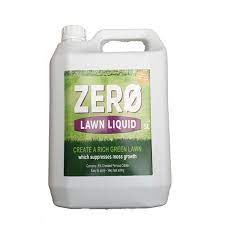Autumn is the perfect time to start looking at your lawn and giving it some TLC which will help it recover from a busy Summer of mowing, wear and tear, and after a hot start to the Summer in May and June, we’ve had a lot of rain in July and somewhat mixed weather in August. Sometimes the heavy rain can limit the opportunities to get out and mow the lawn, causing the grass to get a bit too long at times and then with foot traffic or heavy lawnmowers this can lead to soil compaction so now is a great to set your lawn up to withstand a harsh Winter in the months ahead. Tackling the lawn at this time of year is perfect as any treatment has time to take effect before lower temperatures kick in and growth stops.
Typically what’s carried out at this time of year includes scarifying and aerating the lawn, applying a top dressing, some reseeding and applying an Autumn lawn feed. Depending on the condition of your own lawn perhaps one or two of these jobs will need to be carried out or maybe all of them especially if they have not been done in a number of years. These treatments will have your lawn looking great for the Autumn and have it Winter ready and come next Spring it won’t be such a huge job to get it back to looking its best.
If you look closely at your lawn and if, on close inspection by getting down at ground level carefully pulling the grass leaves apart and if you can’t see the soil underneath due to a build up of thatch and debris that’s an indication that you need to scarify your lawn. Scarifying the lawn will help to provide good air circulation down at the base of the grass and better allow light and moisture into the soil. Depending on the size of your lawn and perhaps your own energy levels you can use a normal rake or a long handled scarifying rake or a scarifying machine. A good spring tine wire rake is ideal to use and you want to remove all the dead grass and moss that has built up over the Spring and Summer months. You can give the lawn a good vigorous raking, being quite aggressive to pull up all that unwanted material, working backwards, ripping out that thatch build up and hopefully getting to see the soil underneath the grass. By doing it in different directions across the lawn gives you the best chance of removing the maximum amount of thatch and you’ll be surprised with how much you end up removing. You can use your lawn mower to hover up the dead grass and thatch and, as long as there’s no weeds amongst it you could add it to your compost heap. There are scarifying machines that you can hire if raking the lawn isn’t practical or you could decide to rake small areas at a time and complete the job over a few weeks.
The next step to consider is aerating the lawn, this helps to relieve compaction that happens over time, especially in high traffic areas. You can use a normal garden fork for this job and you want to push it in as far as you can and once it’s in, slightly tilt the fork backwards to lift the soil a small bit - breaking up the compaction and allowing air into the soil - moving back 5 or 6 inches at a time repeating the process, working backwards. This will encourage deeper root growth and you’ll soon see the benefit of your hard work. The lawn will cope better in times of drought and also when there’s heavy rain or water logging and it will be more resilient to heavy frost. Concentrate on areas that receive the most wear and those that are compacted. You can also use a hollow tine fork or spiked shoes to help improve the aeration.So lots of work to get the heart beating. After scarifying and aerating the lawn you can apply a top dressing of compost mixed with a little sand and even mixed with some lawn seed - this mix can be spread on using a shovel to throw it on and then brush it in with a soft rake or a brush filling the holes created from the forking. Adding some lawn seed every year helps revitalize your lawn and keep it fresh.
You can also apply an Autumn lawn feed at this time of year - usually between now to around mid November. Autumn lawn feeds will be lower in Nitrogen compared to the Spring and Summer treatments and more of the energy goes into the root system helping the grass to over Winter better - dealing better with heavy rain and hard frost. Autumn lawn treatments will also have some moss control to help prevent moss building up over the Winter months, making it an easier task to deal with in the Spring. This is usually sulphate of iron so if you are applying it be careful it doesn’t spill out onto a path or driveway as it can leave a stain. Other products like Mobactor, Osmo and Lawn Gold can also be used - these products have a dual action - feeding the lawn and helping to control moss - these products don’t use sulphate of iron so no blackening of the moss or stains on the driveway and you can apply them up until October or into early November - they’ll give the lawn a lovely green colour and keep the moss under control - also a liquid treatment like Zero or Lawn gold liquid are excellent to use in the Autumn and Winter months - these keep the moss in check not allowing it to build up to much over the Winter and making it easier to deal with next Spring. You could apply the liquid Zero treatment now and again in November or December and come next march when you start to mow the lawn you shouldn’t be facing into a big cushion of moss. So any work carried out now on your lawn will stand to it all Autumn and into the Winter and you’ll be ready for action again in Spring of next year
A few jobs for the week ahead;
- You can plant Autumn Seed potatoes now for a harvesting in the Winter - you could have new spuds for Christmas dinner
- You can plan out your locations for doing a nice Spring flowering bulb display - perhaps some layer planting in containers or planting up a bed for a full on display of Spring colour
- Keep camellias and rhododendrons well watered through late summer while their flower buds are forming
- Deadhead roses to keep them flowering and looking tidy
- Get some ground work done in advance of any Autumn planting - be that sowing a wildflower patch or preparing to plant shrubs, trees or hedges - a bit of groundwork preparation done now when conditions are good will make the job a lot easier
- Consider sowing some green manure on any recently harvested beds to keep weeds at bay and enrich the soil

